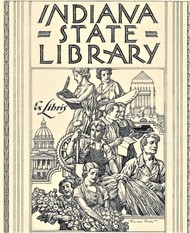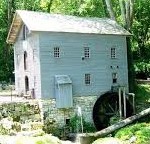
1808   The first corn was ground at Beck’s Mill in Washington County. Settlers from nearby Pigeon’s Roost were among the first customers. A sawmill was soon added, and the business became an integral part of the development and economy of the area.
|
 1920   What is considered the first all-woman jury in Indiana met in Indianapolis in the courtroom of Justice of the Peace T. Ernest Maholm. The 12 members took only five minutes to render a decision in favor of the plaintiff who was suing a pawn shop over ownership of a talking machine (phonograph.) At the end of the hearing, Justice Maholm thanked the women for their service and awarded each a white carnation. 1920   What is considered the first all-woman jury in Indiana met in Indianapolis in the courtroom of Justice of the Peace T. Ernest Maholm. The 12 members took only five minutes to render a decision in favor of the plaintiff who was suing a pawn shop over ownership of a talking machine (phonograph.) At the end of the hearing, Justice Maholm thanked the women for their service and awarded each a white carnation. |
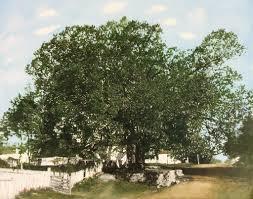 1925   Newspapers reported that the historic Indiana Constitution Elm in Corydon was almost completely gone. The tree had been dead for over a year. All limbs had been removed, but a 10-foot section of the trunk was saved for posterity. It is said that members of the Indiana 1816 Constitutional Convention sometimes conducted meetings in the shade of the huge tree. 1925   Newspapers reported that the historic Indiana Constitution Elm in Corydon was almost completely gone. The tree had been dead for over a year. All limbs had been removed, but a 10-foot section of the trunk was saved for posterity. It is said that members of the Indiana 1816 Constitutional Convention sometimes conducted meetings in the shade of the huge tree. |
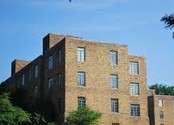 1936   Cornerstone ceremonies were held for Lockfield Gardens, a new housing section for near-downtown Indianapolis. Those on the program included Mayor John W. Kern and State Representative Henry J. Richardson, Jr. Music was provided by the African-American Boy Scout Band. Called at the time a “slum clearance project,” it was part of the federal government’s “New Deal” recovery program and was the first public housing section in the city. Only a few of the original 24 buildings remain, and they have been placed on the National Register of Historic Places. 1936   Cornerstone ceremonies were held for Lockfield Gardens, a new housing section for near-downtown Indianapolis. Those on the program included Mayor John W. Kern and State Representative Henry J. Richardson, Jr. Music was provided by the African-American Boy Scout Band. Called at the time a “slum clearance project,” it was part of the federal government’s “New Deal” recovery program and was the first public housing section in the city. Only a few of the original 24 buildings remain, and they have been placed on the National Register of Historic Places. |
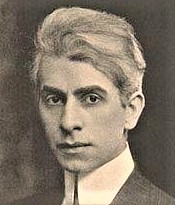 1948   Franklin Booth died in Manhattan. Born in 1874 on a farm near Carmel, Indiana, he became a renown pen-and-ink artist whose exquisite work earned him a place in the Illustrator’s Hall of Fame. His beautifully-detailed pictures appeared in all the popular magazines, including Collier’s, Good Housekeeping, and Saturday Evening Post. He also illustrated books for such authors as James Whitcomb Riley, Mark Twain, and Meredith Nicholson. Pictured on right: A bookplate for the Indiana State Library designed by Franklin Booth.  1948   Franklin Booth died in Manhattan. Born in 1874 on a farm near Carmel, Indiana, he became a renown pen-and-ink artist whose exquisite work earned him a place in the Illustrator’s Hall of Fame. His beautifully-detailed pictures appeared in all the popular magazines, including Collier’s, Good Housekeeping, and Saturday Evening Post. He also illustrated books for such authors as James Whitcomb Riley, Mark Twain, and Meredith Nicholson. Pictured on right: A bookplate for the Indiana State Library designed by Franklin Booth.  |
 |
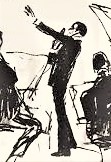 1970   Frank Sinatra and Jerry Lewis performed in front of a sell-out crowd at the Civic Auditorium in Richmond, Indiana. Produced by Sinatra, the show was a benefit for the family of Dan Mitrione, the former Richmond police chief who had been murdered by terrorists while working for the U. S. Embassy in Uruguay. Sinatra bought tickets for local firemen and policemen and 400 military members. A 36-piece band was on stage for the event, which raised more than $80,000 for the family. 1970   Frank Sinatra and Jerry Lewis performed in front of a sell-out crowd at the Civic Auditorium in Richmond, Indiana. Produced by Sinatra, the show was a benefit for the family of Dan Mitrione, the former Richmond police chief who had been murdered by terrorists while working for the U. S. Embassy in Uruguay. Sinatra bought tickets for local firemen and policemen and 400 military members. A 36-piece band was on stage for the event, which raised more than $80,000 for the family. |
Follow this link to subscribe to Hoosier History Highlights and to view archived editions
Follow us on Instagram: @instatehousetouroffice
|



 1925   Newspapers reported that the historic Indiana Constitution Elm in Corydon was almost completely gone. The tree had been dead for over a year. All limbs had been removed, but a 10-foot section of the trunk was saved for posterity. It is said that members of the Indiana 1816 Constitutional Convention sometimes conducted meetings in the shade of the huge tree.
1925   Newspapers reported that the historic Indiana Constitution Elm in Corydon was almost completely gone. The tree had been dead for over a year. All limbs had been removed, but a 10-foot section of the trunk was saved for posterity. It is said that members of the Indiana 1816 Constitutional Convention sometimes conducted meetings in the shade of the huge tree. 1936   Cornerstone ceremonies were held for Lockfield Gardens, a new housing section for near-downtown Indianapolis. Those on the program included Mayor John W. Kern and State Representative Henry J. Richardson, Jr. Music was provided by the African-American Boy Scout Band. Called at the time a “slum clearance project,” it was part of the federal government’s “New Deal” recovery program and was the first public housing section in the city. Only a few of the original 24 buildings remain, and they have been placed on the National Register of Historic Places.
1936   Cornerstone ceremonies were held for Lockfield Gardens, a new housing section for near-downtown Indianapolis. Those on the program included Mayor John W. Kern and State Representative Henry J. Richardson, Jr. Music was provided by the African-American Boy Scout Band. Called at the time a “slum clearance project,” it was part of the federal government’s “New Deal” recovery program and was the first public housing section in the city. Only a few of the original 24 buildings remain, and they have been placed on the National Register of Historic Places. 1948   Franklin Booth died in Manhattan. Born in 1874 on a farm near Carmel, Indiana, he became a renown pen-and-ink artist whose exquisite work earned him a place in the Illustrator’s Hall of Fame. His beautifully-detailed pictures appeared in all the popular magazines, including Collier’s, Good Housekeeping, and Saturday Evening Post. He also illustrated books for such authors as James Whitcomb Riley, Mark Twain, and Meredith Nicholson. Pictured on right: A bookplate for the Indiana State Library designed by Franklin Booth. Â
1948   Franklin Booth died in Manhattan. Born in 1874 on a farm near Carmel, Indiana, he became a renown pen-and-ink artist whose exquisite work earned him a place in the Illustrator’s Hall of Fame. His beautifully-detailed pictures appeared in all the popular magazines, including Collier’s, Good Housekeeping, and Saturday Evening Post. He also illustrated books for such authors as James Whitcomb Riley, Mark Twain, and Meredith Nicholson. Pictured on right: A bookplate for the Indiana State Library designed by Franklin Booth.   1970   Frank Sinatra and Jerry Lewis performed in front of a sell-out crowd at the Civic Auditorium in Richmond, Indiana. Produced by Sinatra, the show was a benefit for the family of Dan Mitrione, the former Richmond police chief who had been murdered by terrorists while working for the U. S. Embassy in Uruguay. Sinatra bought tickets for local firemen and policemen and 400 military members. A 36-piece band was on stage for the event, which raised more than $80,000 for the family.
1970   Frank Sinatra and Jerry Lewis performed in front of a sell-out crowd at the Civic Auditorium in Richmond, Indiana. Produced by Sinatra, the show was a benefit for the family of Dan Mitrione, the former Richmond police chief who had been murdered by terrorists while working for the U. S. Embassy in Uruguay. Sinatra bought tickets for local firemen and policemen and 400 military members. A 36-piece band was on stage for the event, which raised more than $80,000 for the family.

